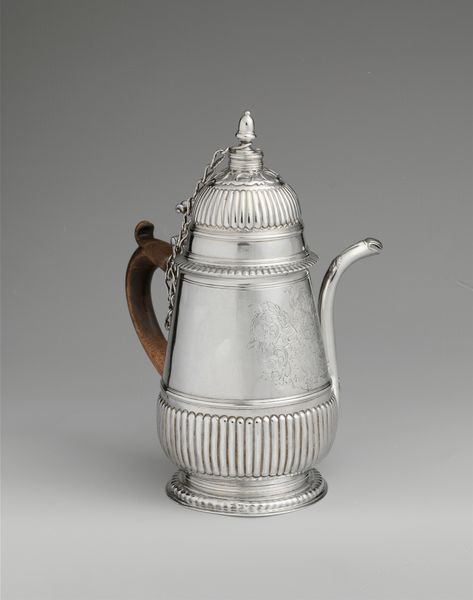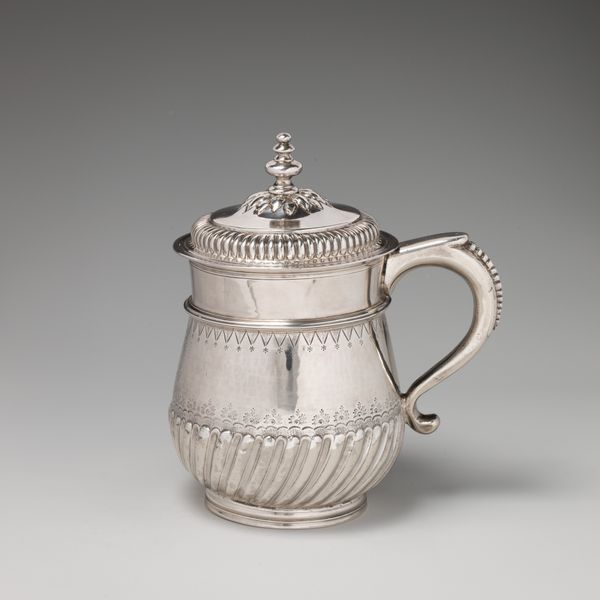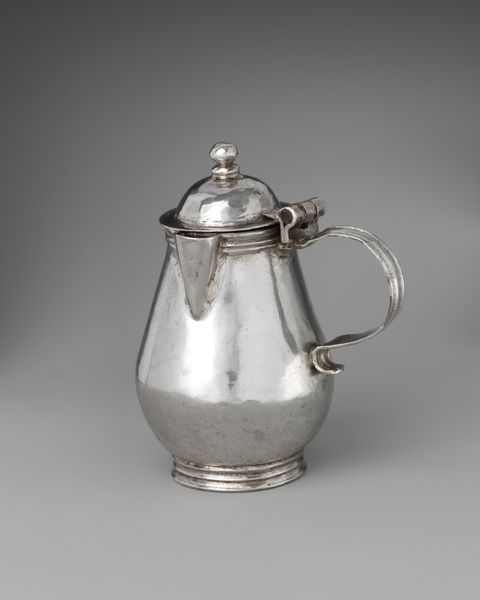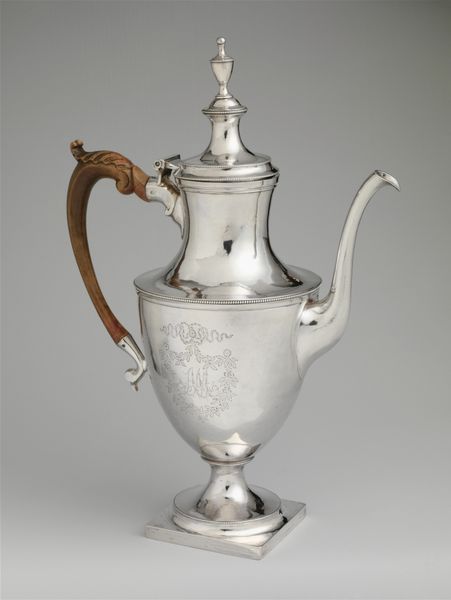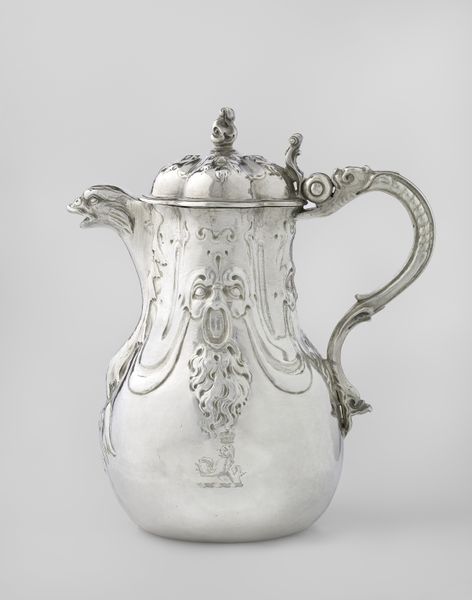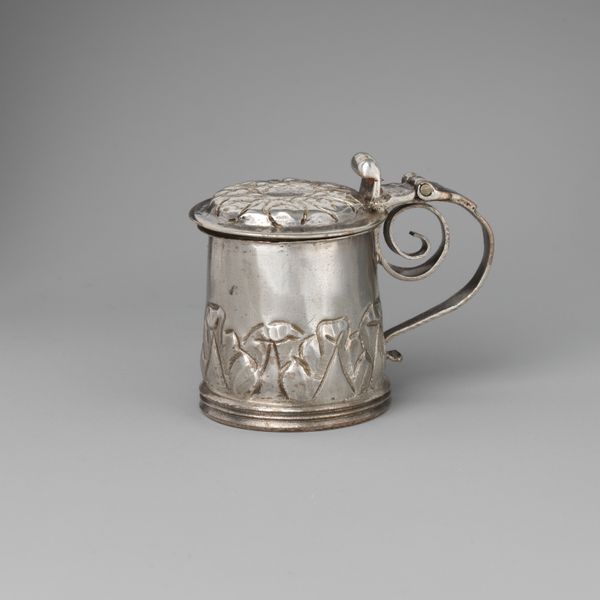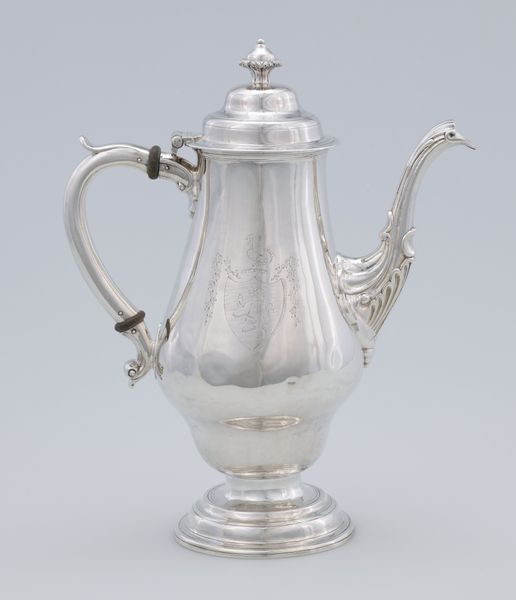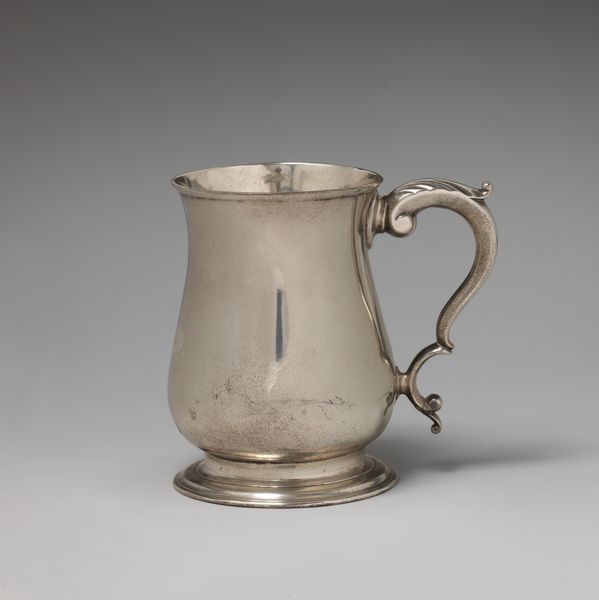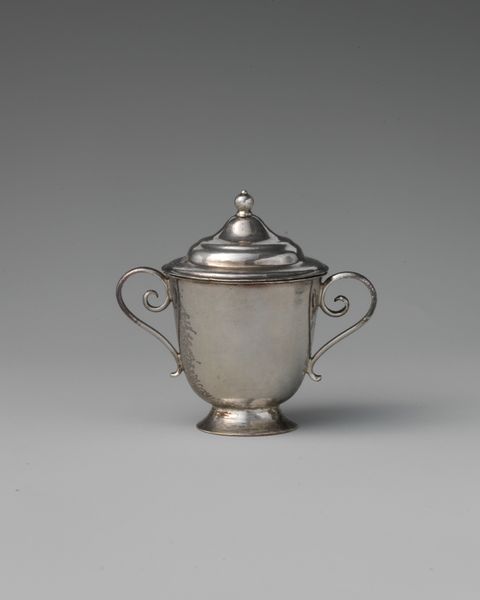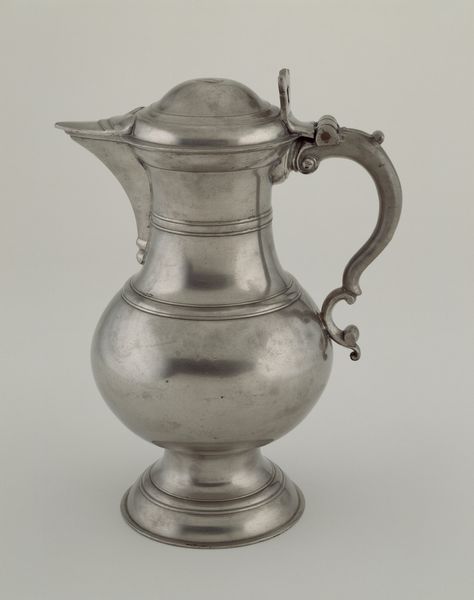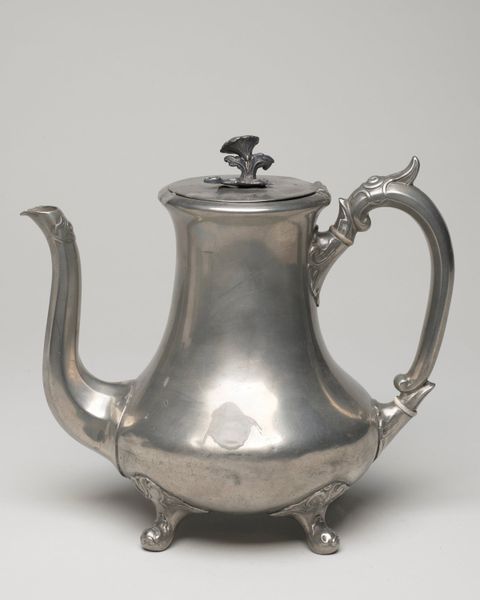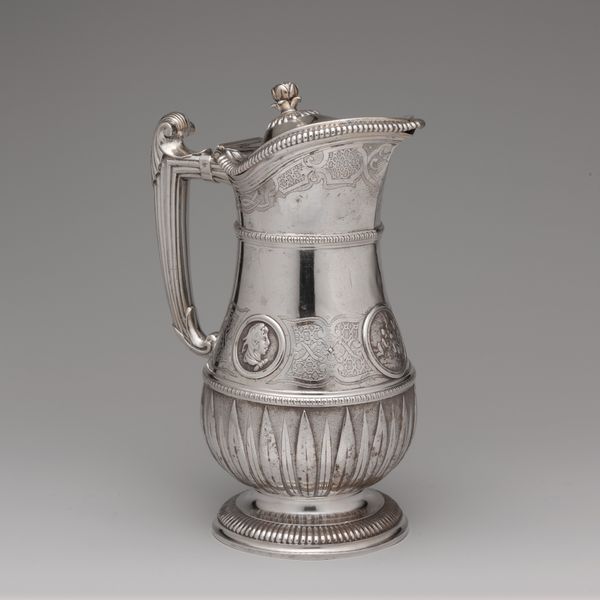
silver, metal, sculpture
#
silver
#
baroque
#
metal
#
sculpture
#
decorative-art
Dimensions: 2 1/8 × 1 7/8 in. (5.4 × 4.8 cm)
Copyright: Public Domain
Editor: This petite, 18th-century coffeepot with a hinged cover, housed here at the Met, immediately strikes me with its polished yet aged sheen, it has clearly stood the test of time. Fashioned from silver, its miniature stature makes it resemble more of a decorative sculpture than a utilitarian object. How would you unpack this from a formal perspective? Curator: Indeed. Begin with its form: notice the pronounced horizontal division created by the raised band circling the pot. It subtly divides the upper and lower registers, creating two distinct, yet integrated shapes. What do you make of the lid? Editor: I think the curved lid, echoing the rounded bottom, and its simple knob, complement the streamlined silhouette. Do you see this design following similar visual conventions from the baroque period? Curator: Precisely. Observe the play of light across the smooth, reflective surface of the silver. These surface effects are less dynamic, certainly not agitated, as in some baroque sculpture. Yet, the way the handle curves, the slight fluting near the spout – they lend a baroque sensibility, tempering an otherwise severe, functional object. Do you agree? Editor: I do. Even its imperfections, or signs of wear, contribute to its material presence, wouldn't you say? They invite a tactual kind of gaze, almost making it more baroque-adjacent, perhaps like a humble iteration? Curator: An excellent point. These surface nuances disrupt any sense of perfection. But, even if it were perfect, flawless and timeless, this division contributes to its complexity and ensures it functions as more than just a functional form. Editor: I hadn't quite noticed all those subtle features before. Looking at it now, it feels less like just a cute little pot and more like a dynamic spatial organization. Curator: Precisely. Now imagine examining the entire decorative art collection using the formal method to examine how the arrangement informs and reforms your initial feelings.
Comments
No comments
Be the first to comment and join the conversation on the ultimate creative platform.
